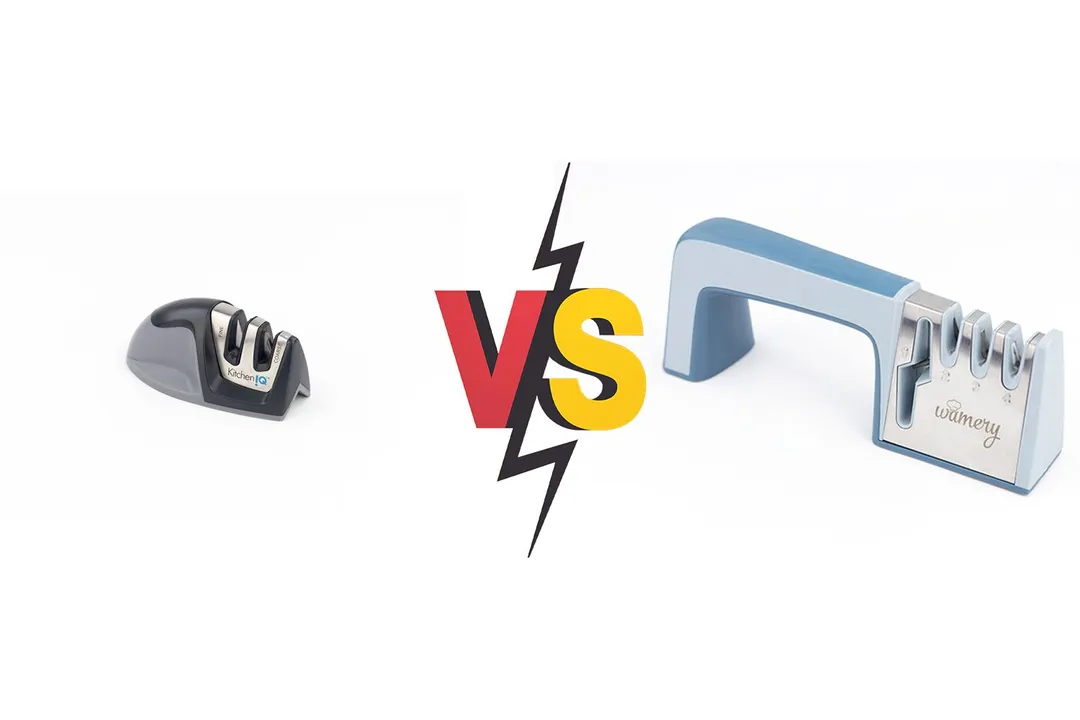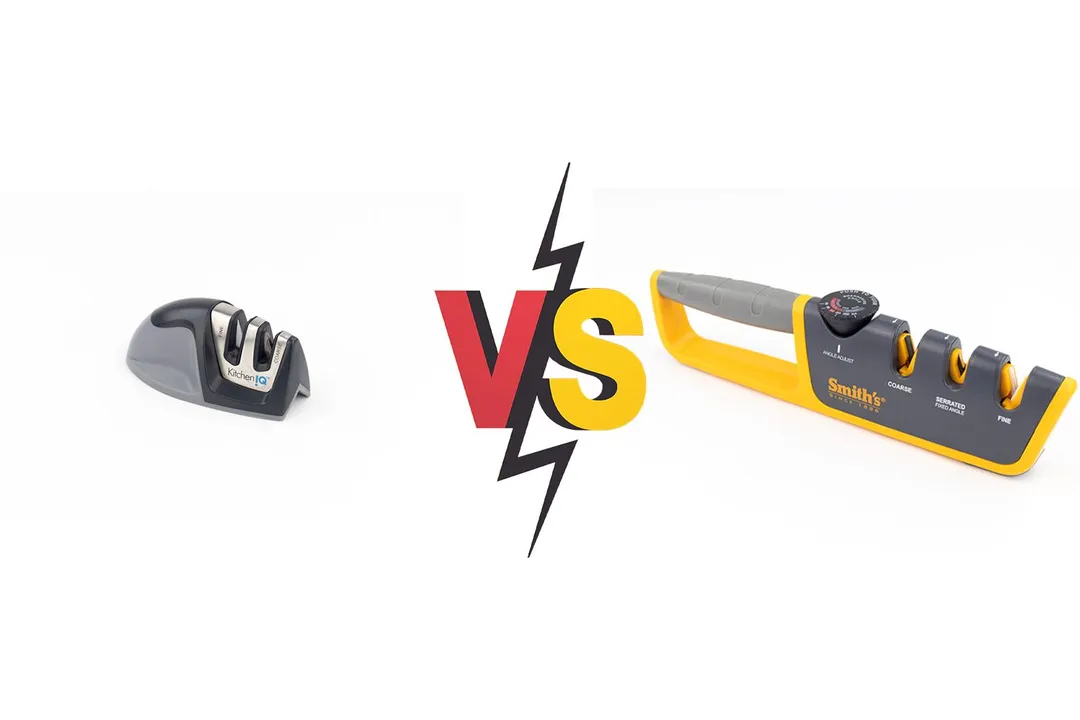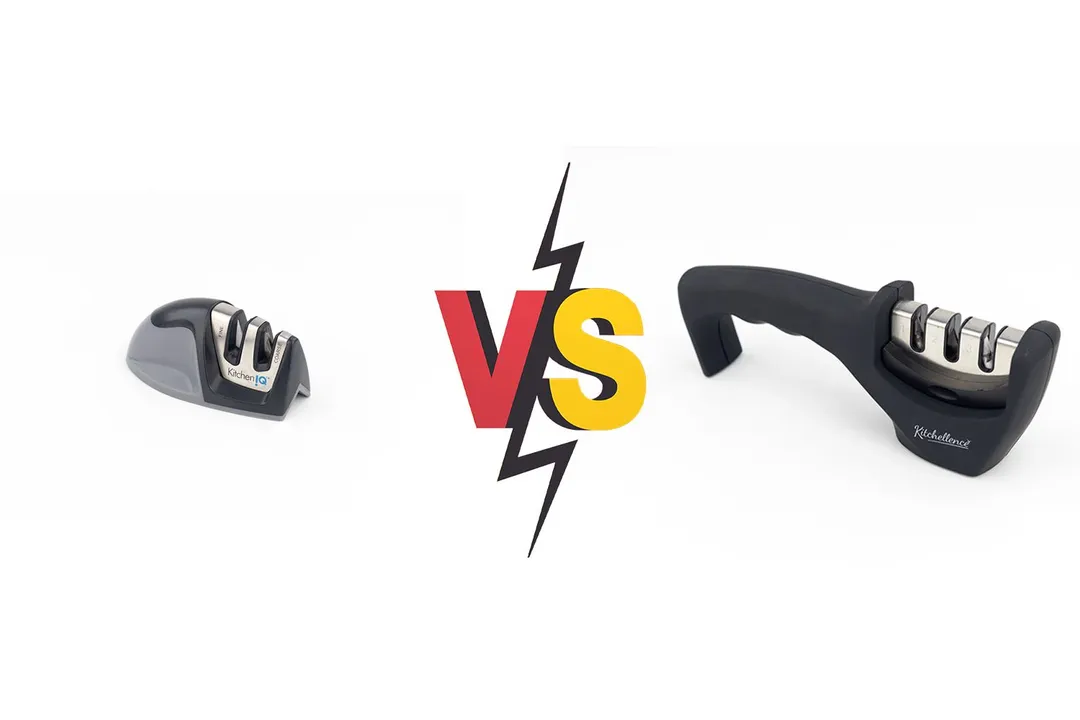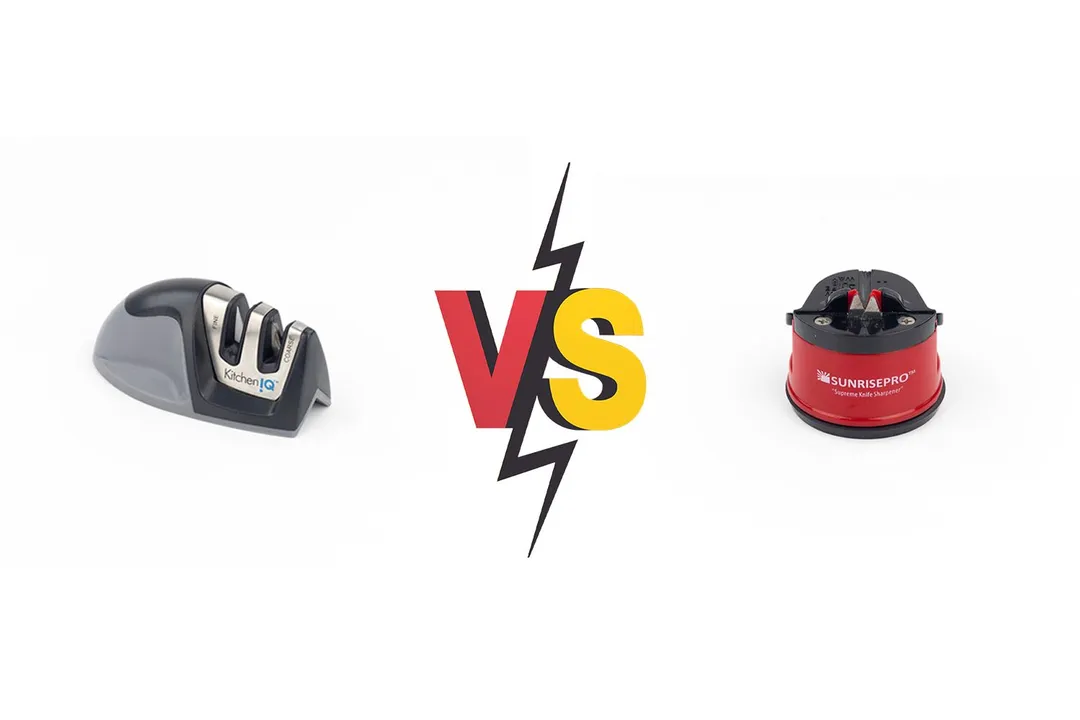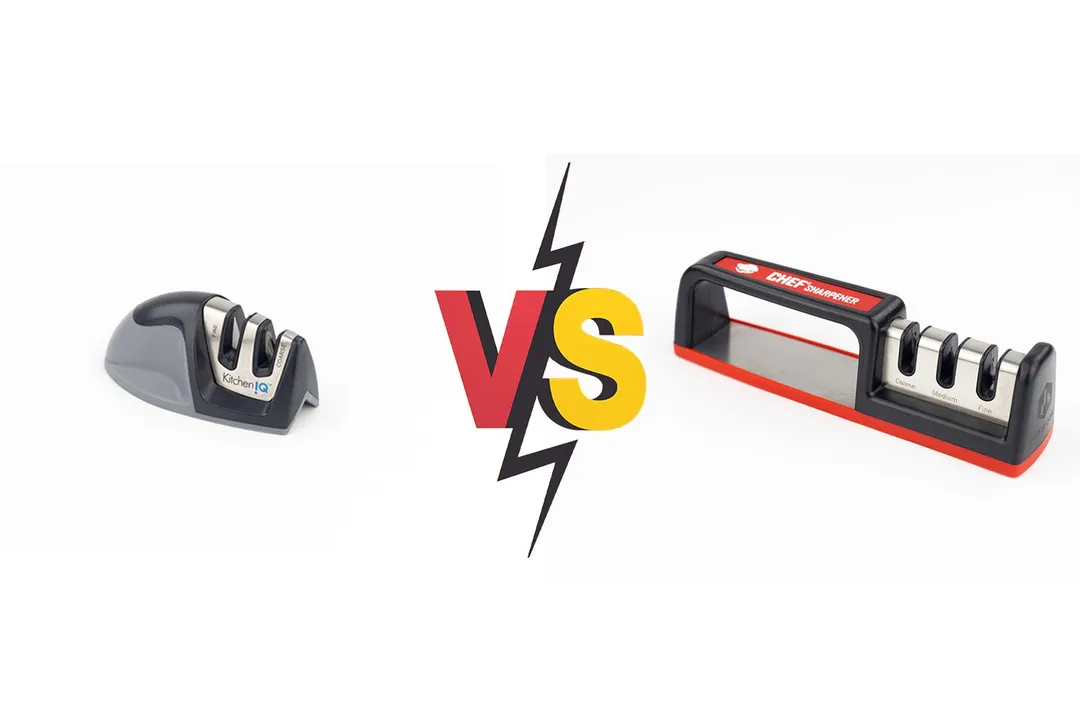Our recommendations are made independently through Research & Testing. We may receive commissions from purchases made via our links.
KitchenIQ 50009 2-Stage vs. Mueller 4-Stage Manual Sharpener Side-by-Side Comparison
Wondering which one is the better choice between the KitchenIQ 50009 2-stage vs. Mueller 4-stage manual sharpener? Read our detailed comparison.
KitchenIQ 50009
Tested Using Methodology v1.1Mueller 4-Stage
Tested Using Methodology v1.1
Overall Verdict
The KitchenIQ 50009 and the Mueller 4-stage manual sharpeners are both decently built devices, and they differ as much in functionality as their looks suggest.
The KitchenIQ 50009 features a small, compact body with an ‘edge grip’ base that allows it to attach firmly to the edge of your countertop when sharpening. Its working section sports tungsten carbide blades for sharpening and ceramic rods for honing.
Unfortunately, probably due to their modest sizes, these abrasives didn’t perform very well in our tests: They removed a lot of knife material but took way too much time to sharpen. The sharpness level was mediocre, though serviceable. The knife edge was left with more deformities than typically expected.
Despite having three sharpening slots for knives, the Mueller wasn’t any kinder to the edge; however, it sharpened faster and more effectively. With its large, ergonomic handle, the sharpener is easier and safer to work with. We didn’t test the scissor slot, but it can be handy for those who use kitchen shears.
Pros & Cons
- Easy storage
- Affordable price
- Base works on both counter edge and flat surfaces
- Simple, sturdy design
- Strong construction, pretty coloring
- Quick sharpening
- Scissor slot
- Ease of use
- Awkward small size
- Long sharpening time
- High center of gravity
- Harsh on the knife edge
Key Specs
Where to Buy
*You help support HealthyKitchen101's product testing and reviews by purchasing from our retail partners.
Analysis and Test Results
Performance
Sharpening Time to Cut a Lemon
Material Retention


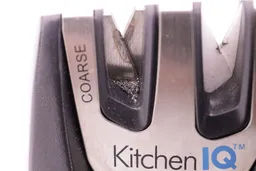
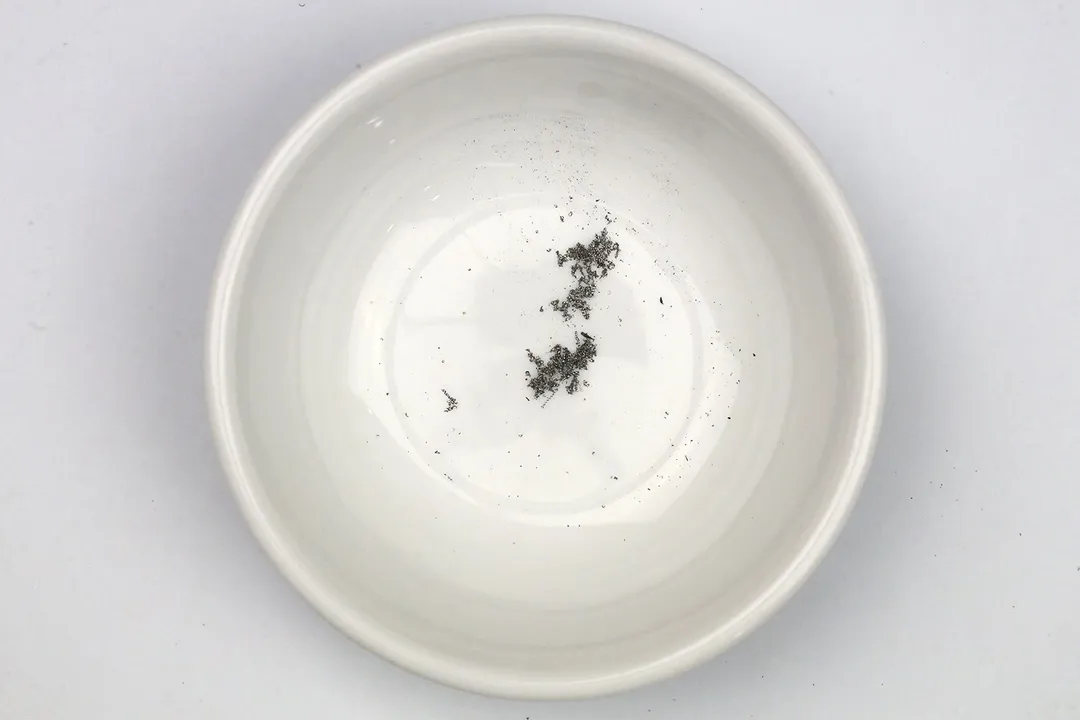

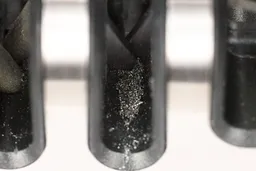
Maximum Sharpness Achieved
Edge Smoothness
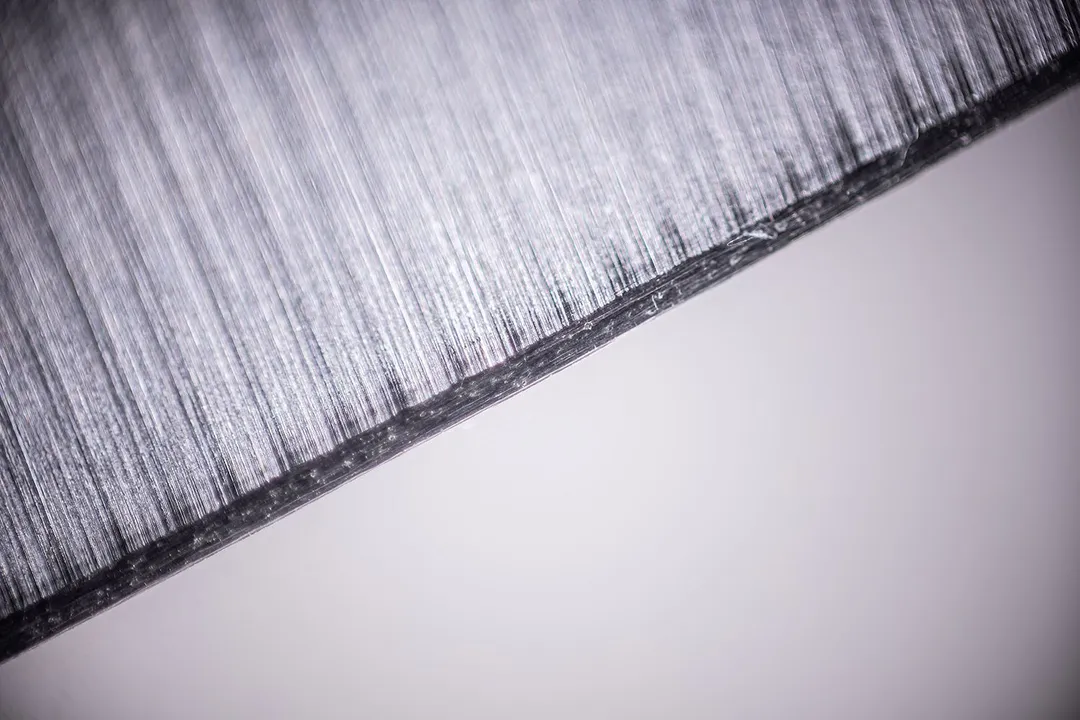

Design
In the Box
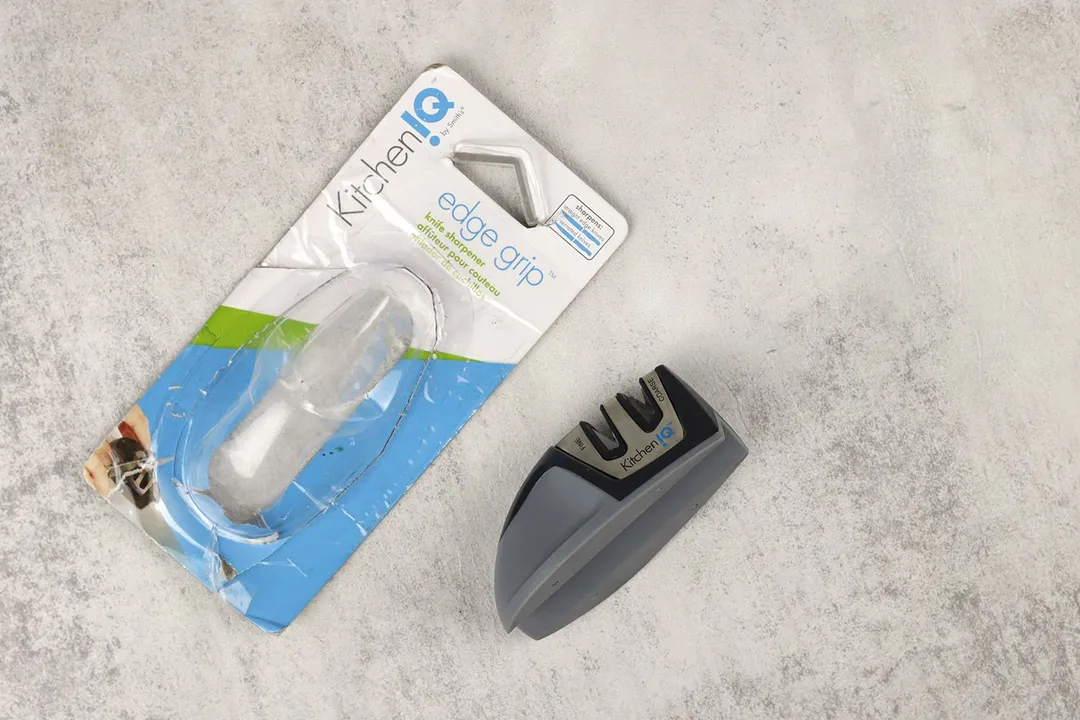
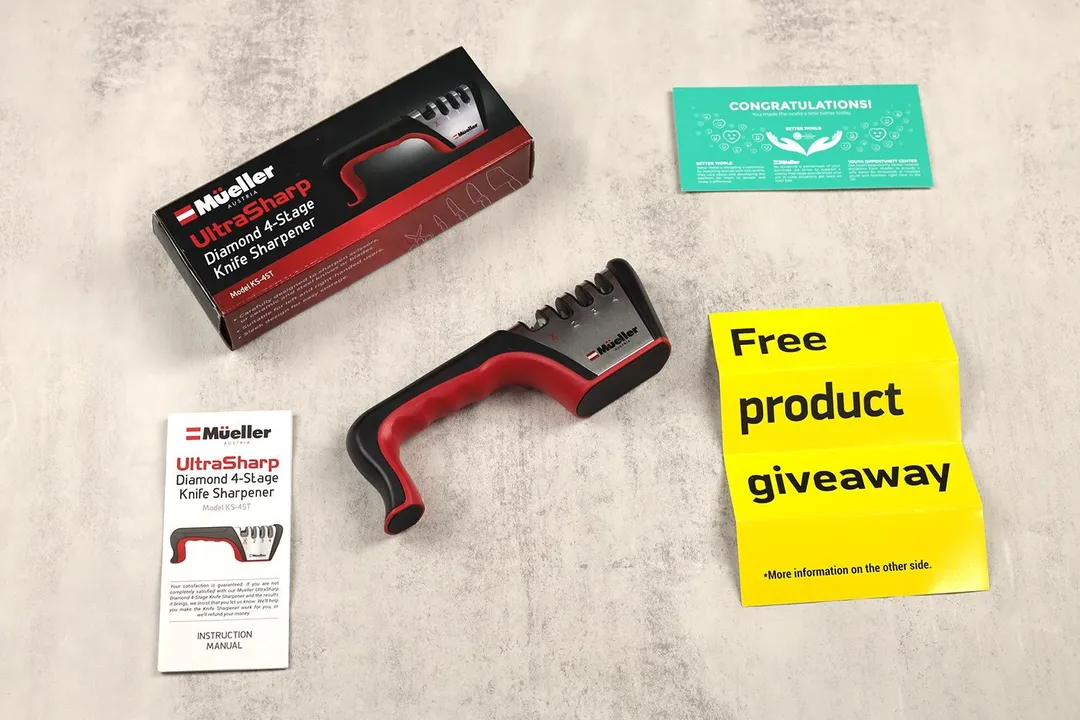
Dimensions
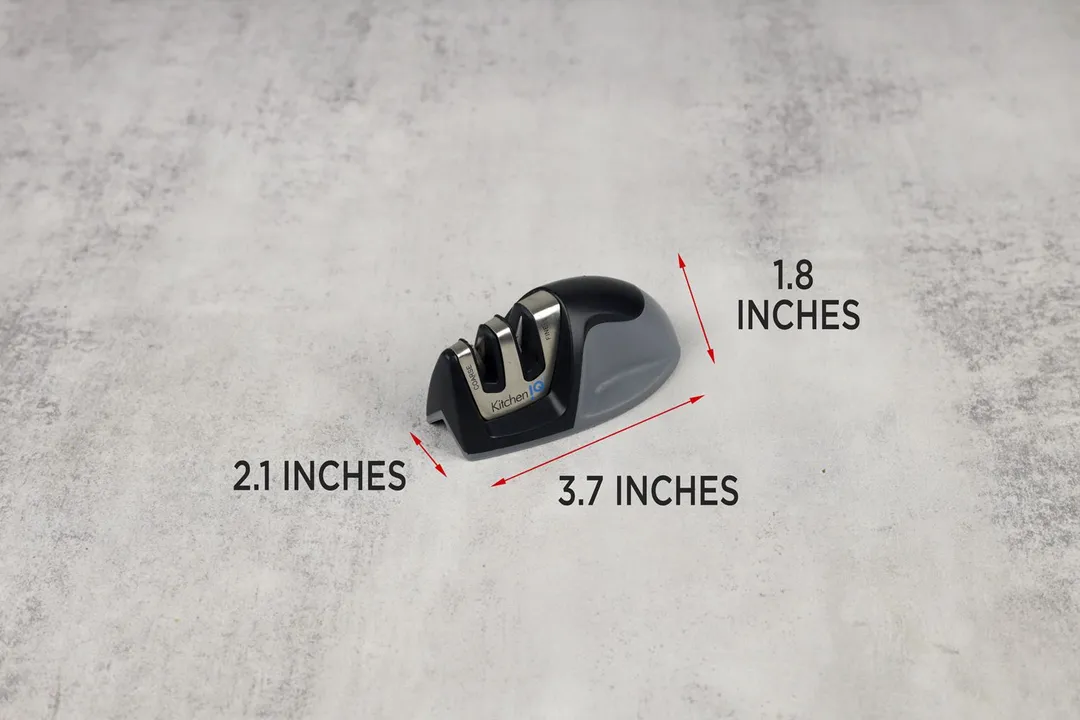
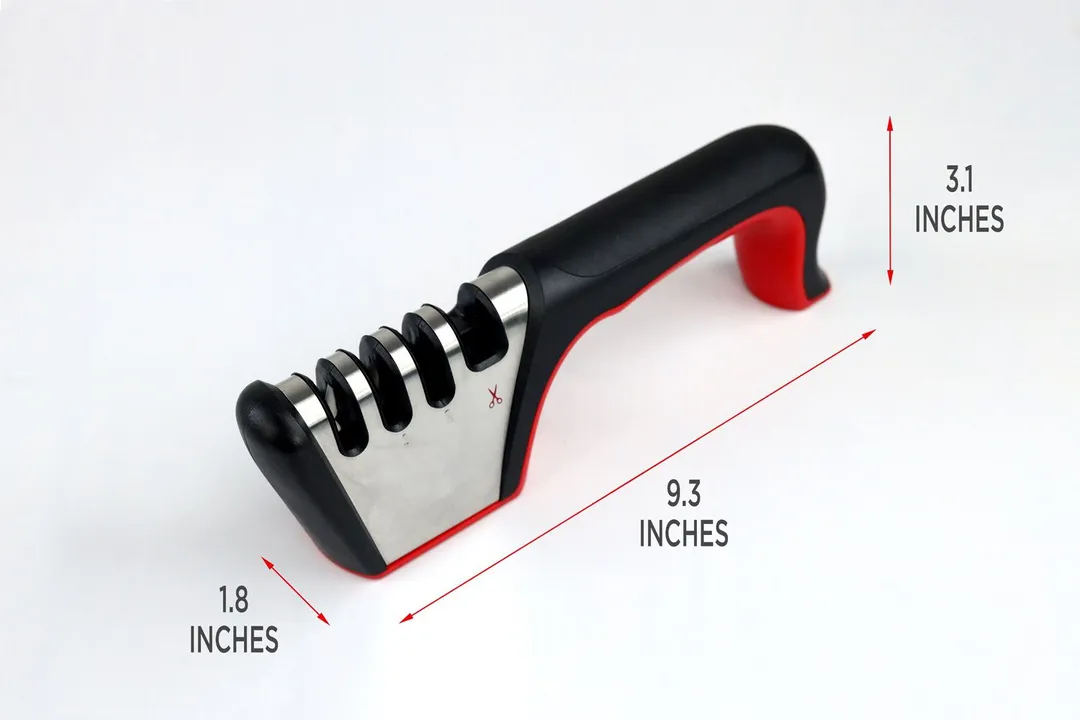
Build Quality

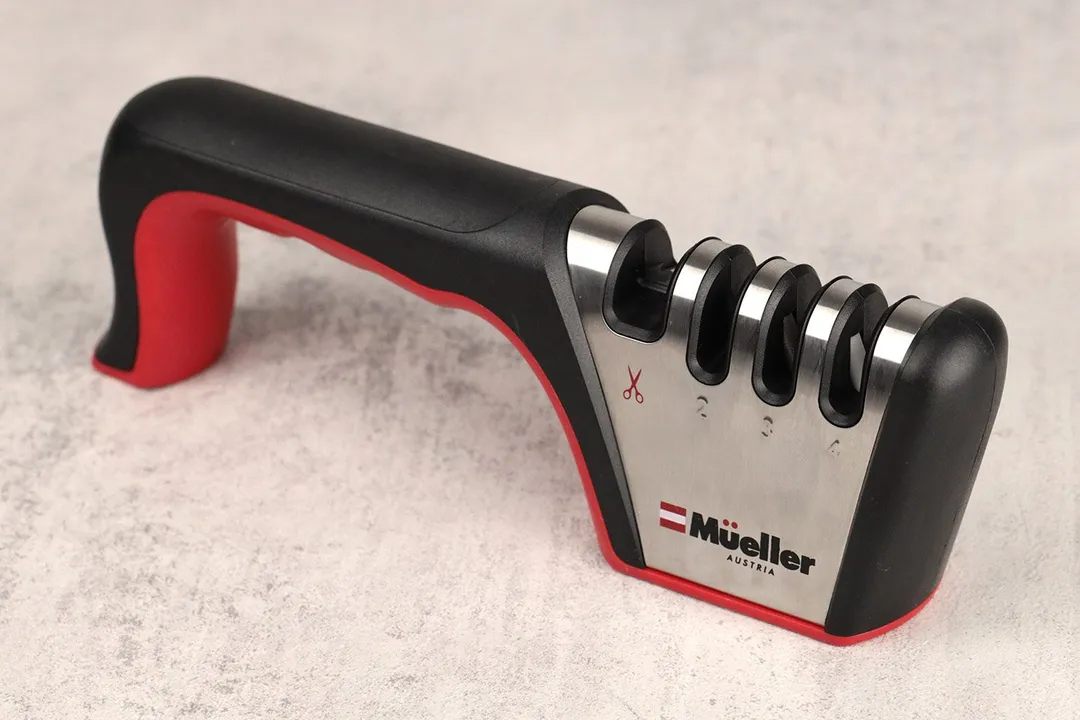
Working Section
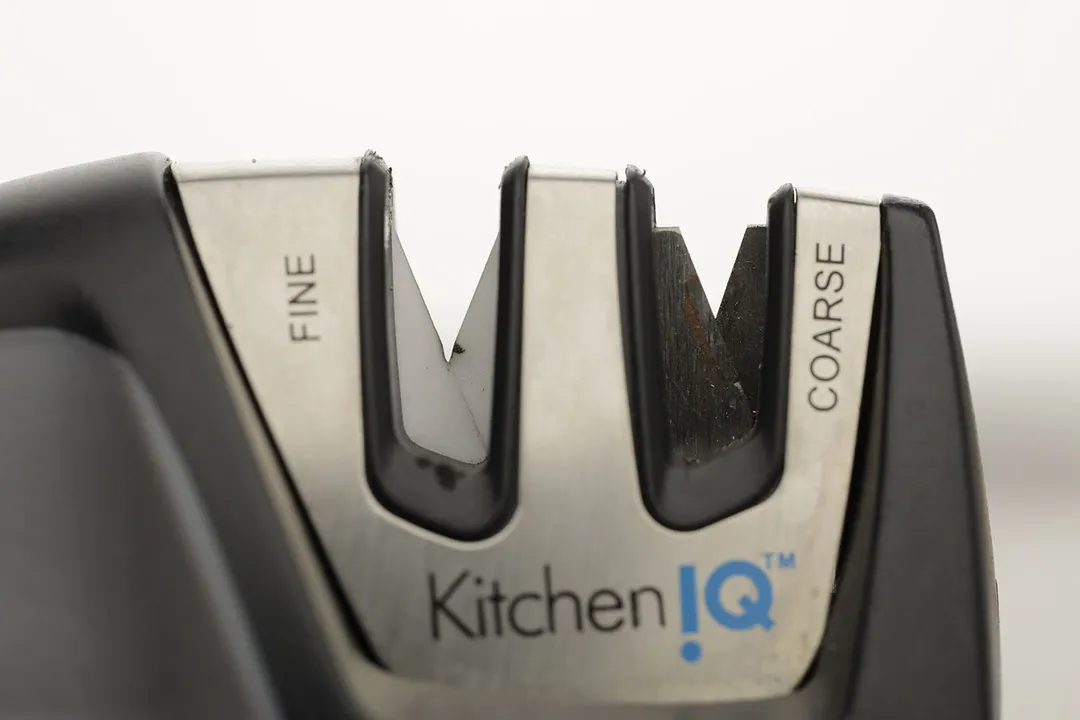
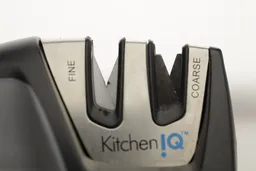
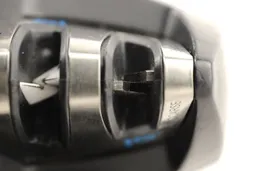
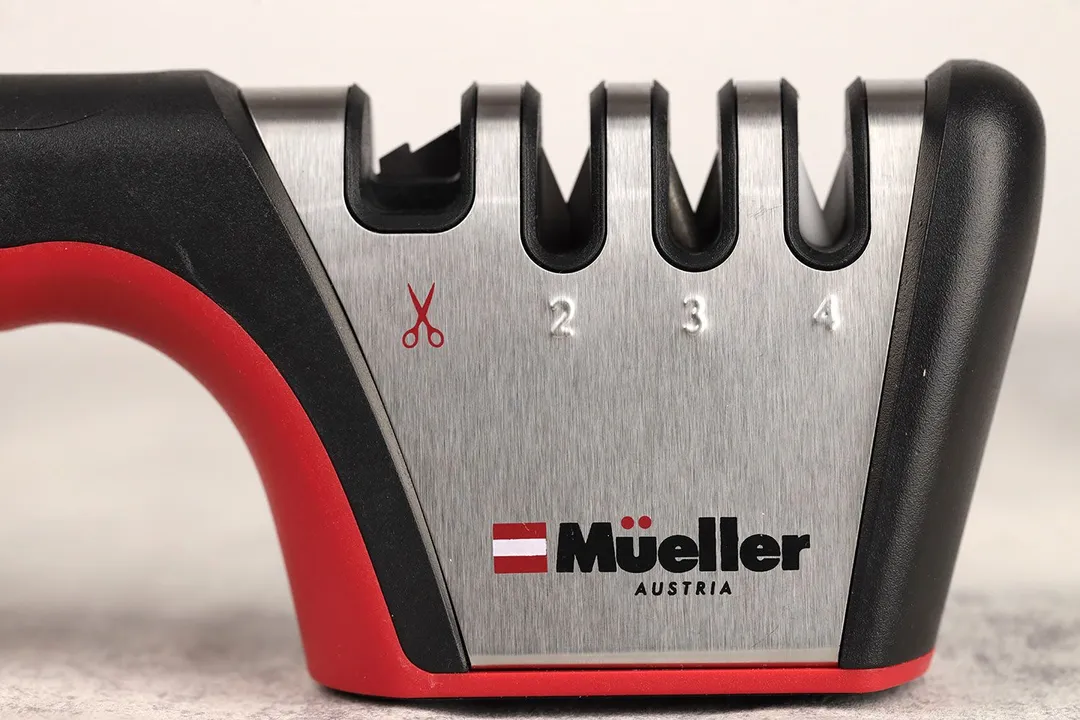
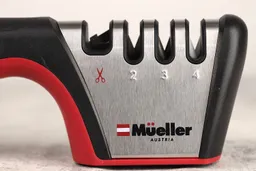
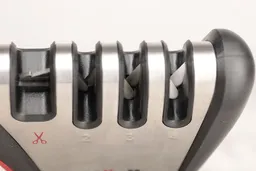
Base
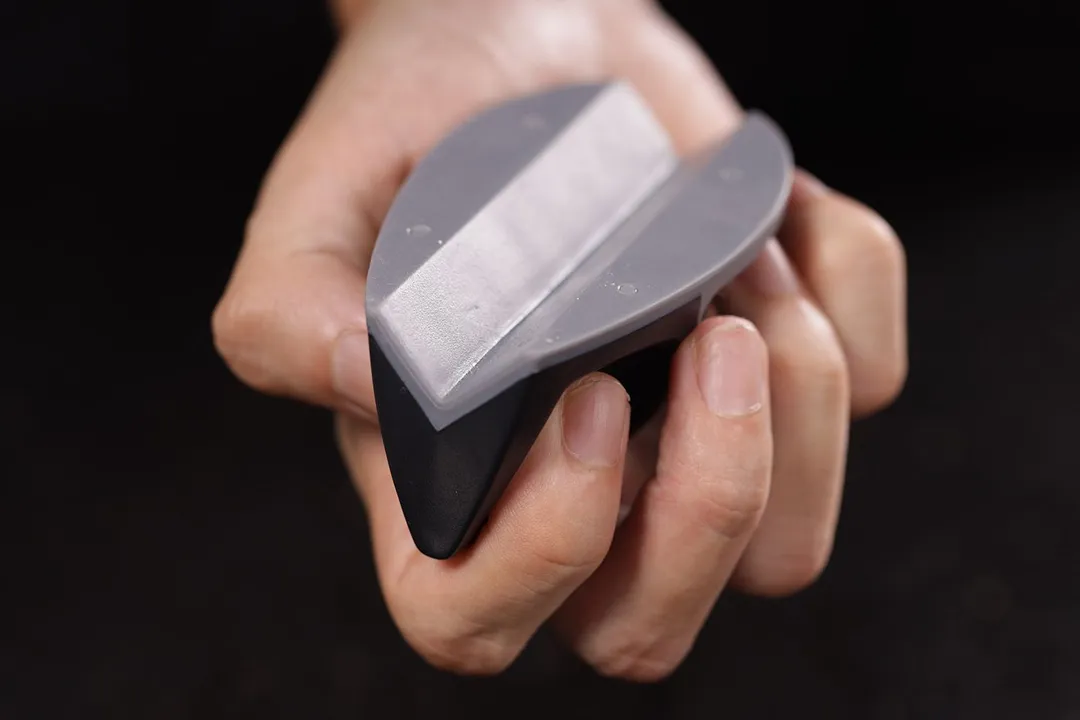

Grip
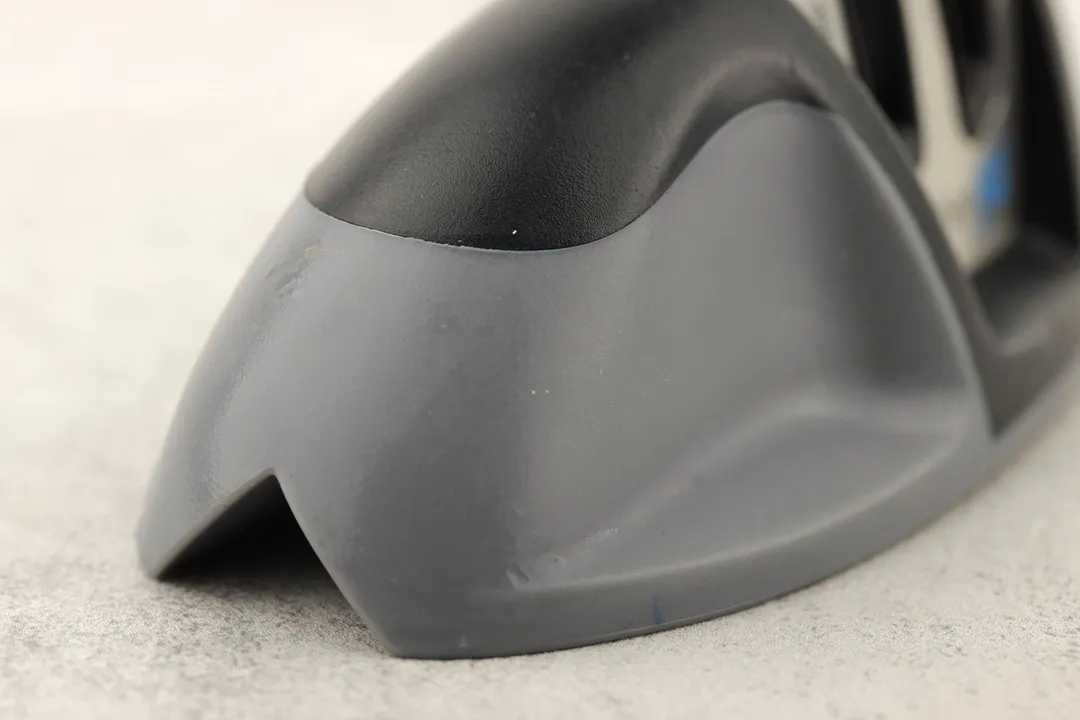
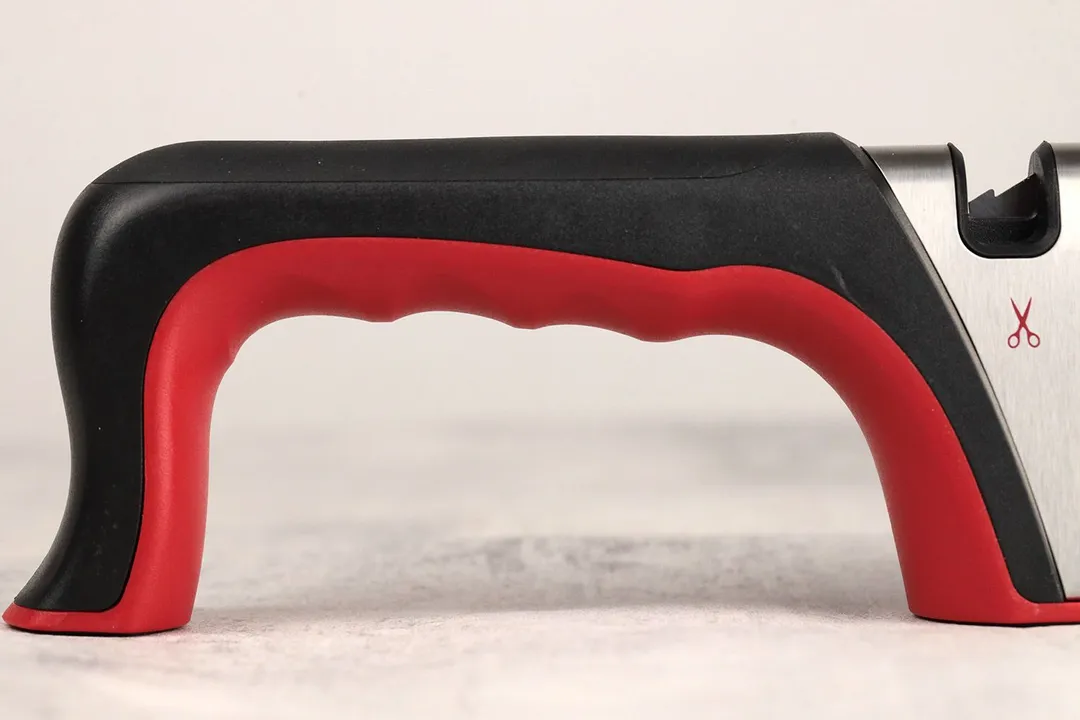
Usability
Slot Arrangement
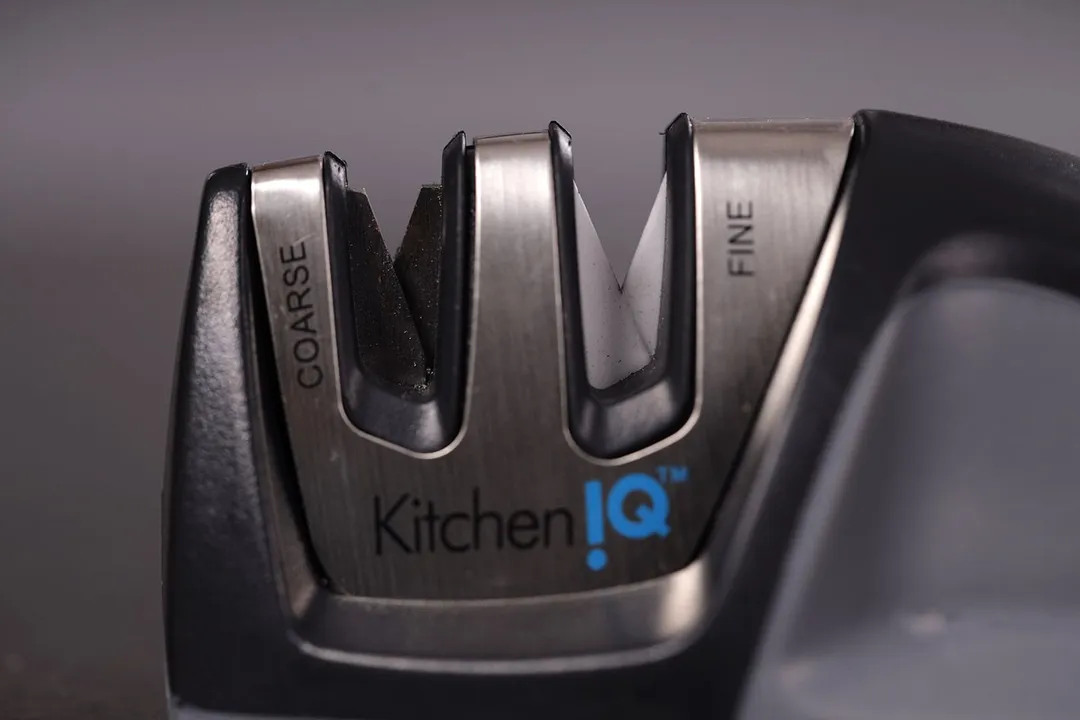
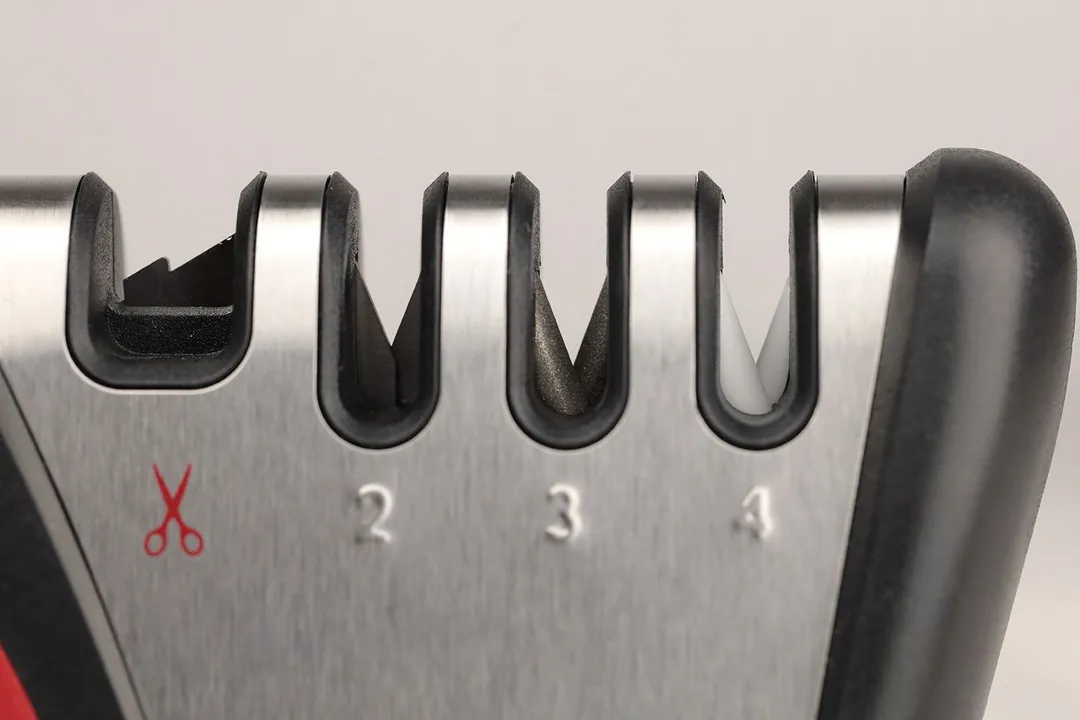
Insertion
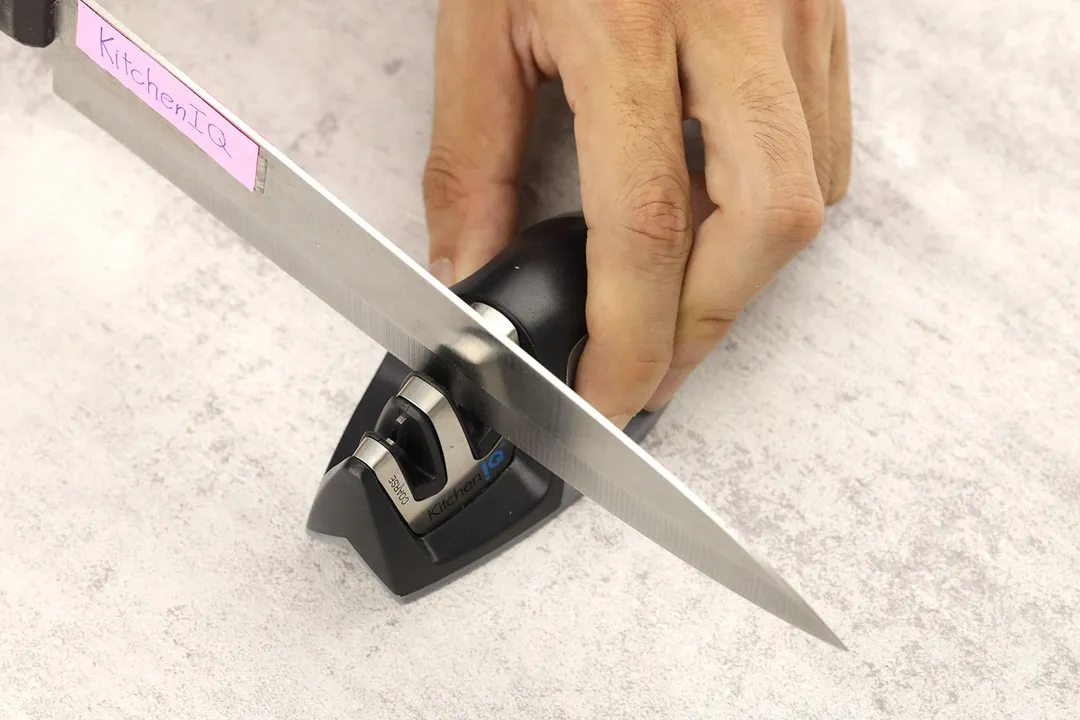
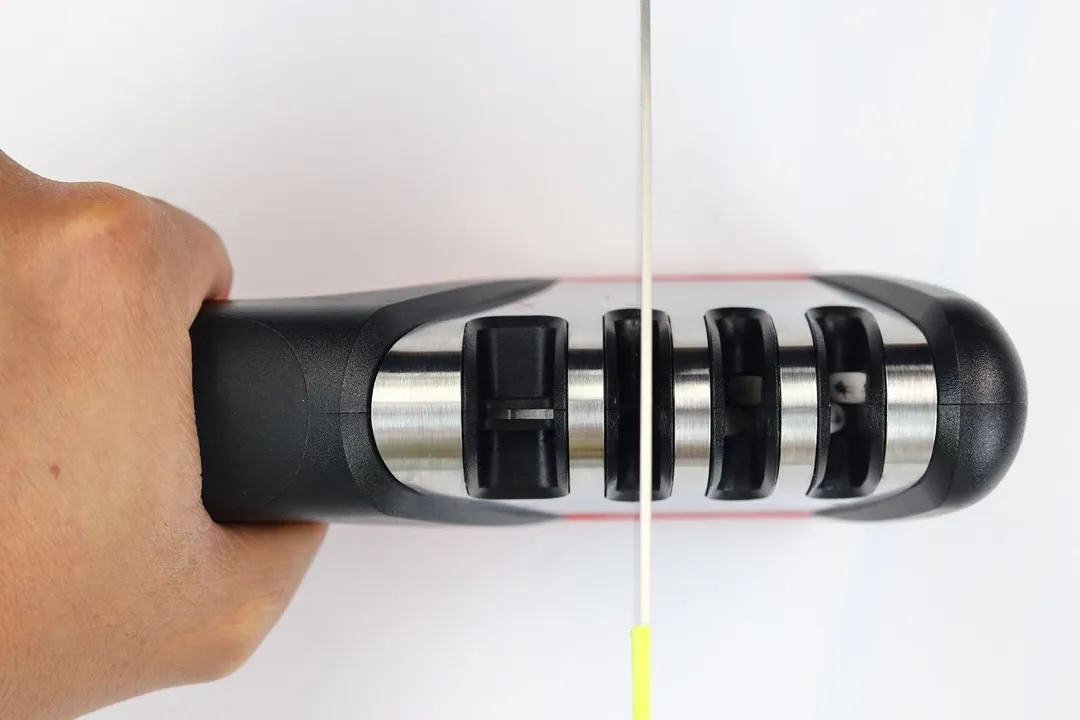
Pulling Through
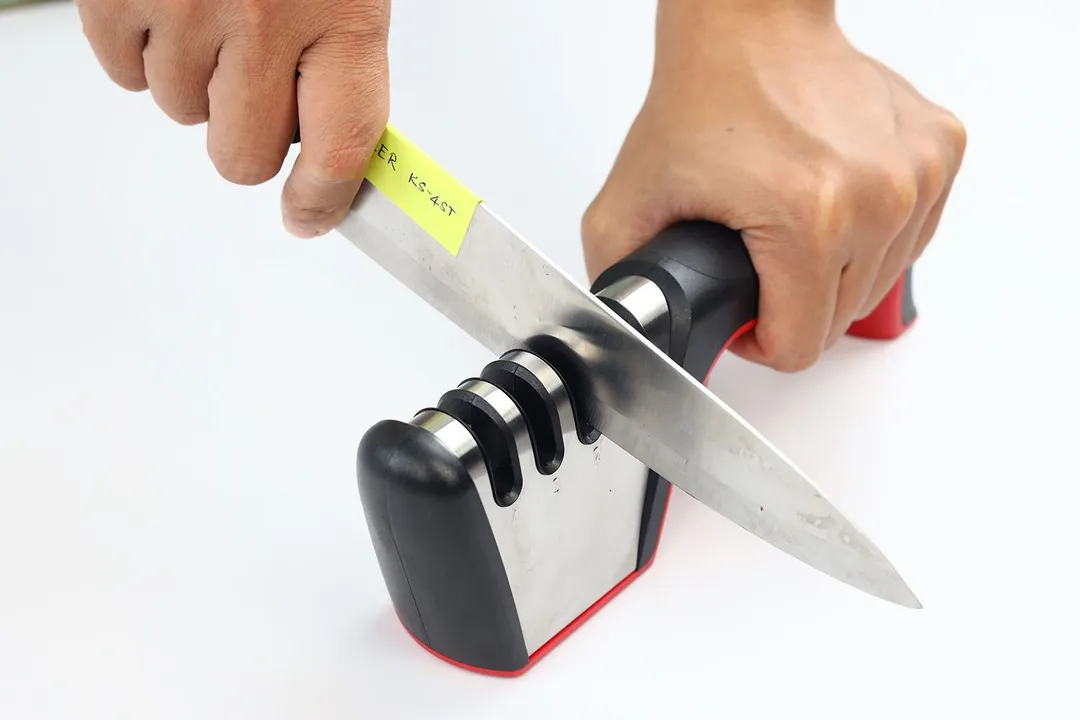
Stability on a Clean Surface

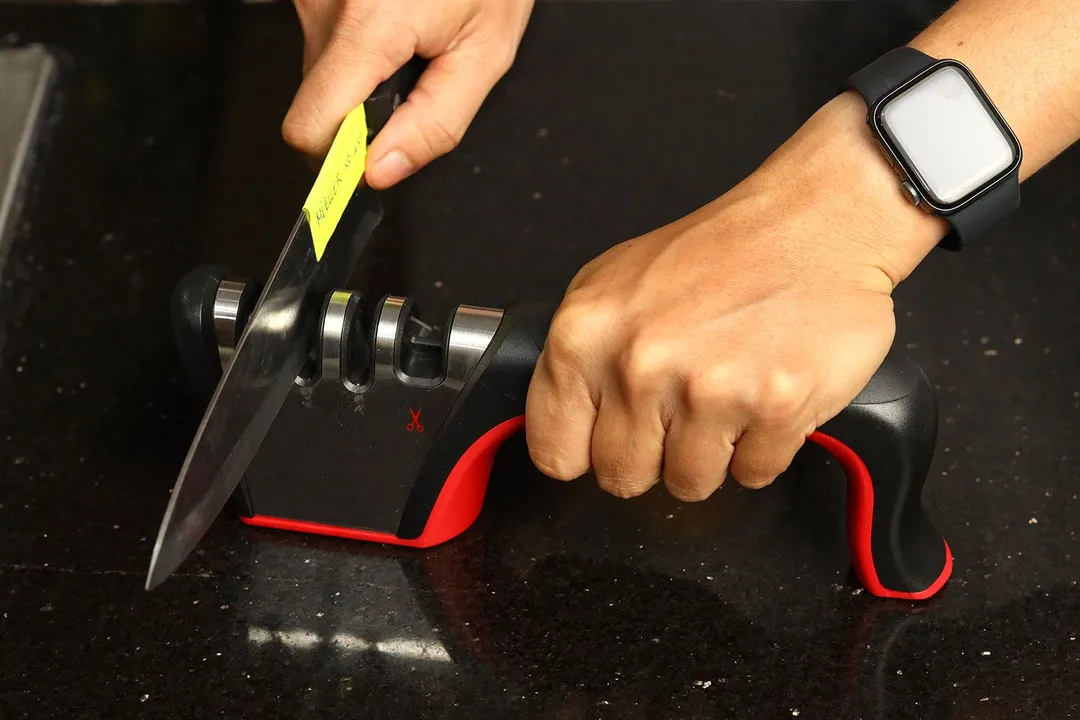
Stability on a Wet and Dirty Surface
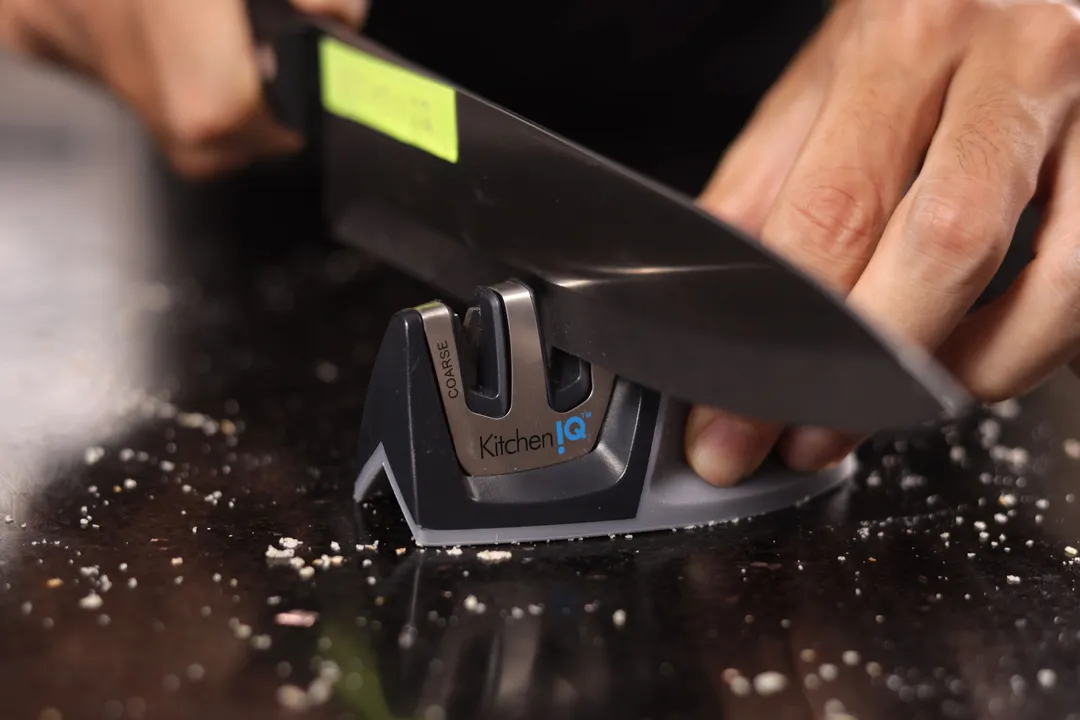

Behind the Comparison
Anh Ngo is a writer with 9 years experience at different media outlets, covering from public news and events to product testing and analysis. At HealthyKitchen101, she works across different departments, communicating closely with its network of writers, editors, and health, tech, and search engine experts to provide a meaningful and pleasant reading experience for visitors.
Lap is Head of the Research, Testing, and Review Team (RTR Team) at HealthyKitchen101.com, where he directs and supervises the testing of kitchen gadgets and appliances.
Nguyen Ntk is a graphic designer, photographer, and videographer whose philosophy centers around respecting and celebrating the beauty of reality. Through his lenses, Nguyen strives to capture the true essence of objects and events, showcasing and highlighting authentic features without distortion or exaggeration.



